Ryan Hall's Blog, page 238
June 30, 2016
Kayla Montgomery, Runner with Multiple Sclerosis, to Receive Award
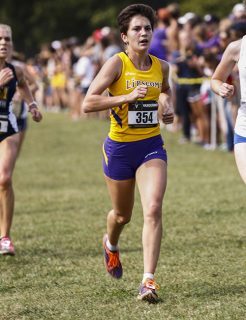
This Fourth of July, 20-year-old Kayla Montgomery will be honored with the Pathfinder Award at the Village Runner 4th of July 5K in Redondo Beach, Calif. The award is to commemorate her unique and inspiring story of becoming one of North Carolina’s fastest high school long-distance runners, and then going on to become a successful Division I athlete at Nashville’s Lipscomb University, despite having multiple sclerosis (MS), which causes her to lose feeling in her legs when she runs.
You may have heard of or watched Montgomery’s story from the ESPN E:60 episode “Catching Kayla.” She’s known as the girl who collapses into her coach’s arms at the finish line due to the increase in body temperature that causes her to lose feeling in her legs, immediately followed by ice being poured onto her legs to calm the misfiring of nerves.
Some may think the loss of feeling in one’s legs while running is an advantage, but in Montgomery’s case, it made it very difficult for her to judge her pace because she couldn’t feel the pain. When she first started running on the Mount Tabor High School team in 2010, a year after her MS diagnosis, she had to learn how to rely on the movement of her arms in order to control her pace.
She then became not only the fastest girl on her high school team, but also the fastest long-distance runner in the state, having won the North Carolina high school state title in the 3,200-meter in 2013.
Now she’s studying psychology at Lipscomb University, while maintaining a rigorous training schedule of three hours a day, six days a week, covering 60 to 75 miles. Her freshman year, she helped Lipscomb win a fourth successive conference championship, placing 13th overall and seventh for her team in the 5K race.
“I had good enough competition in high school, but I was number one on the team and then running with the boys for three years. So now, I’m on a team with tons of talented runners and it’s really awesome to have that many people to push myself,” said Montgomery on adjusting to collegiate running. “I find myself constantly learning from the girls on my team and I am beyond honored to have been recruited to run for such a strong team.”
On Independence Day, Montgomery will not only be receiving an award, but also running in the 23rd annual Village Runner 4th of July 5K presented by UCLA Health. The race is expected to have up to 4,000 runners and Montgomery will surely finish as one of the race’s top participants. However, having recently come out of an injury to her lower back, she’ll be pursuing a much slower pace than usual and not looking to compete.
After this summer, Montgomery will be entering her senior year of college. Her goal has always been to go into forensics, but now she says she’s leaning toward career opportunities with more flexible hours such as becoming a teacher or professor. Whether it’s through running or a future career in education, though, one thing is for certain: Montgomery will continue to bring awareness to MS and inspiring others who live with the disease.
“I continue to try and push myself to defy the odds so that I can inspire those with MS who gave up,” Montgomery said in a press release. “I want people to know that regardless of what your situation is, it does not have to come out on top, and that there is always a way. Of course, having MS could very easily put limitations on my life if I let it, but that is something I do not plan on ever doing.”
The post Kayla Montgomery, Runner with Multiple Sclerosis, to Receive Award appeared first on Competitor.com.
NBC Releases TV Schedule of U.S. Olympic Track & Field Trials

Hayward Field. Photo: Kennett Mohrman
NBC will present 76 hours of coverage from the 2016 U.S. Olympic Trials, including nearly 17 hours of track and field coverage beginning July 1st and running through July 10th.
The coverage of the track and field trials in Eugene, Ore., will be spread across NBC’s properties, including NBC, cable channel NBCSN and online via the NBC Sports Live Extra app. Much of the coverage will be in primetime.
For distance-running fans, NBC will televise the men’s 10,000m finals on July 1st at 9 p.m. ET, and the women’s 10,000m finals on July 2nd at 2 p.m. ET. The 5,000m and 1,500m races will also be televised. All of the NBC and NBCSN broadcasts will also be streamed live on the NBC Sports Live Extra app.
Here’s the schedule provided by NBC, though the network stressed that additional events may be covered as well. All times listed are Eastern:
July 1: Men’s shot put, men’s 10,000m finals (NBC, 9 p.m.)
July 2: Women’s 10,000m, women’s long jump, women’s discus (NBC, 2 p.m.)
July 2: Decathlon (NBCSN, 5 p.m.)
July 3: Men’s & women’s 100m and 400m finals (NBC, 7 p.m.)
July 4: Men’s & women’s 800m, men’s pole vault, men’s javelin (NBCSN, 7 p.m.)
July 7: Women’s steeplechase, women’s shot put, women’s triple jump (NBCSN, 8 p.m.)
July 8: Men’s 1,500m, Women’s 100m hurdles, men’s & women’s 400m hurdles semifinals (NBCSN, 6 p.m.)
July 8: Women’s 100m hurdles, men’s discus, men’s steeplechase finals (NBC, 8 p.m.)
July 9: Men’s 110m hurdles, men’s 200m, men’s 5000m, men’s triple jump (NBC, 8 p.m.)
July 10: Men’s & women’s 1,500m, women’s 200m, men’s and women’s 400m hurdles, men’s high jump (NBC, 7 p.m.)
The post NBC Releases TV Schedule of U.S. Olympic Track & Field Trials appeared first on Competitor.com.
Hoka One One Unveils Innovative, Asymmetrical Track Spikes
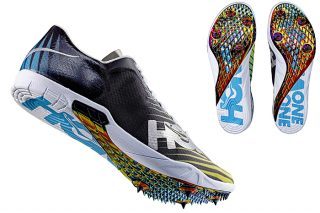
Hoka Speed Evo R Track Spikes
Running on a track is a lot like a NASCAR race—it’s non-stop left turns mixed with a few short straightaways until you reach the finish line. There are no right turns at all. But unlike a race car, which runs on a symmetrically balanced set of four tires, a runner runs decidedly imbalanced around the turns—in other words, there is more pressure and force being applied on the outside (lateral side) of the left shoe and the inside (medial side) of the right shoe. Hoka One One approached that unique imbalance with the design of its new Speed Evo R spikes that debut on elite athletes running in events from the 800 to the 10,000 meters at the July 1-10 U.S. Olympic Trials.
To ensure optimal stability, grip and speed while cornering, the spikes have an asymmetrical design that includes a medial midsole wrap and differently shaped spike plates that support each foot’s specific movements through the turns. A layer of EVA complements the breathable lightweight upper to deliver what Olympic 1,500 silver medalist Leo Manzano has called a cushioned, yet fast shoe.
“Our goal is to always make running faster more fun. We re-examined the track spike and took nothing for granted. We refined the spike plate, spike configuration and midsole support and cushioning,” Hoka co-founder and vice president of innovation Jean Luc Diard said in a release. “We worked closely with silver medalist Leo Manzano to make sure we didn’t miss any details.”
The Speed Evo R 4.1 oz. (men’s size 9) and 3.6 oz. (women’s size 7) and will carry a $130 price tag when they hit stores for consumers next February.
RELATED: Inspired Gear of a Summer of Speed and Celebration
The post Hoka One One Unveils Innovative, Asymmetrical Track Spikes appeared first on Competitor.com.
Time to Fly With Leo Manzano
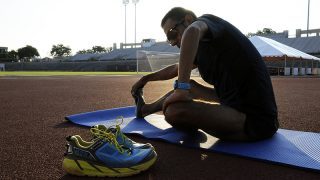
Few athletes have seized the moment better than HOKA middle-distance runner Leo Manzano. In the men’s 1500m final at the London Olympic Games, Manzano closed in the final meters to pick up a silver medal. It was the first American medal of any kind in the event since Jim Ryun won silver in 1968. Leo, who owns a personal best mile time of 3:50.6, now specializes in the 1,500m and has gathered many top finishes at USA Track and Field Championships.
The post Time to Fly With Leo Manzano appeared first on Competitor.com.
Sneak Peak: Maggie Vessey’s Newest Race Kits for Olympic Trials
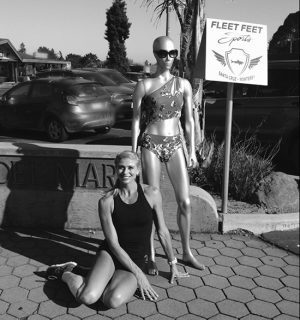
Photo Gallery
1 of {count}
Back to Start
View Larger Image
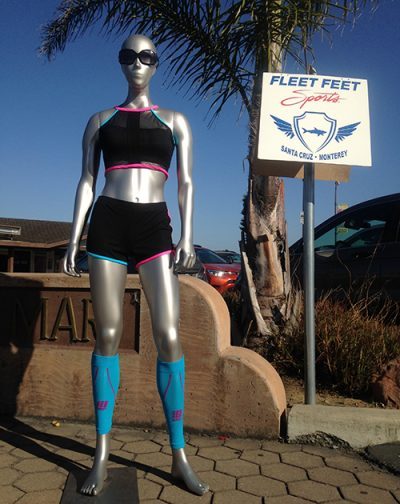
Photo: Courtesy of Maggie Vessey
View Larger Image
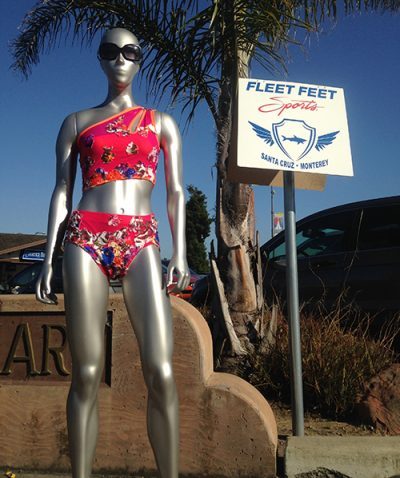
Photo: Courtesy of Maggie Vessey
View Larger Image
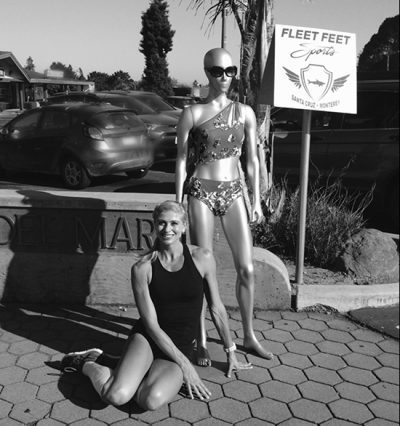
Photo: Courtesy of Maggie Vessey
Related Galleries

Photos: Fast Moms with Olympic Track Aspirations
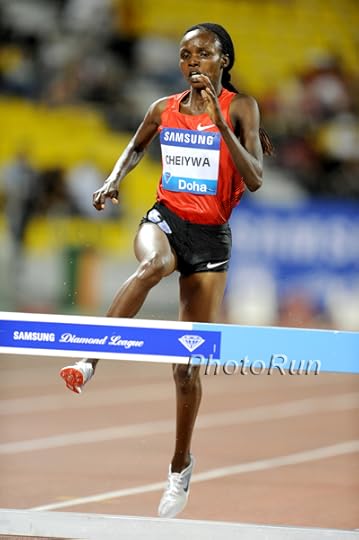
Photo Gallery: Doha Diamond League Distance Action

2010 Reebok Boston Indoor Games Photo Gallery

World Athletics Final Photo Gallery

More Galleries
This weekend Maggie Vessey will be sporting three new race kits she created specially for the U.S. Olympic Track and Field Trials. Here are two of the race kits worn on mannequins from a local Aptos Fleet Feet store in California. She plans on wearing them on day 1 (July 1) and day 2 (July 2) of the Trials held in Eugene, Ore., where she’ll be competing in the 800 meters.
RELATED: U.S. Olympic Track and Field Trials TV Schedule
Three years ago, the professional middle-distance runner had ended a four-year sponsorship with New Balance and begun designing her own line of fashionably flashy race kits with Los Angeles based designer Merlin Castell, which garnered plenty of media attention in 2014. Since then she’s continued creating new outfits and racing in them unsponsored.
However, recently, Vessey signed her first sponsorship deal since New Balance with CEP, a sports compression technology company, and ITEM m6, a fashion brand that also incorporates the latest in compression tech. (One of the outfits as seen in the above photo is styled with blue CEP calf compression sleeves, and—in true Maggie Vessey-style—a pair of Luis Vuitton sunglasses.)
“CEP and ITEM m6 provide the best performance and craftsmanship across the compression category and I truly believe in their products,” Vessey said in a press release. “I am thrilled to partner with these two brands who offer the perfect combination of performance and style.”
Other than gaining a sponsorship this year, Vessey also relocated from L.A. to her hometown of Santa Cruz, Calif., to train closer to her coach, Greg Brock, in preparation for the Trials. She says it was also due to the fact that she’s been unsponsored for the past few years.
Up until her new sponsorship with CEP and ITEM m6, Vessey says she had been receiving some help from family and friends. “The Santa Cruz Sentinel had done an article on me about my move back to Santa Cruz and push toward making the Olympic Team with the lack of funding,” Vessey said. “One of my neighbors saw that and he went door to door on my behalf without tell me about it. A group of neighbors then showed up at my house and surprised me with cash and checks to help me on my journey. I was so very grateful for that.”
Like every Olympic hopeful, Vessey will be giving it her all to make Team USA during the next four days. The 800-meter Finals is scheduled for the Fourth of July, and if she makes it, the fast fashionista hints that her final outfit will showcase a patriotic theme fitting for a day of victories.
The post Sneak Peak: Maggie Vessey’s Newest Race Kits for Olympic Trials appeared first on Competitor.com.
The 1904 Olympic Marathon and the Early Days of Doping
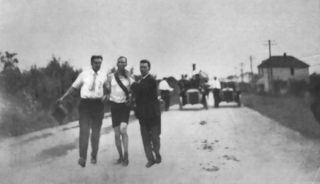
Photo: U.S. public domain.
Republished with permission of VeloPress from Spitting in the Soup: Inside the Dirty Game of Doping in Sports by Mark Johnson. Read more about sports doping at www.spittinginthesoup.com .
The morning of August 30, 1904, dawned hot and humid in St. Louis, Missouri. The United States was hosting its first Olympic Games, and it was as if an oppressive blanket had been lowered over the Mississippi River town for a signature event, the marathon. Fourteen miles into the 24.85-mile run (the 26.2-mile standard was not established until 1908), runner Charles Hicks—British-born but representing the United States—doubled over on the side of a road in what a Brooklyn Daily Eagle reporter called “sweltering heat and clouds of dust.” Along with the swampy conditions, Hicks and 31 other runners dodged a torture trail of unpaved roads and ankle-twisting rocks. Dust accumulated in powdery pools so deep it swallowed the runners’ shoes. There was one water stop—a well 12 miles into the course. Farm dogs added misery. A pack of snarling canines chased a black South African competitor off course. Meanwhile, running in cutoff trousers and street shoes, the race’s sole Cuban, a mail carrier named Félix Carvajal, scrounged fruit from an orchard along the way. The Cuban promptly puked up a gut full of pulp.
In these conditions, turning to modern medicine was logical; refusing to offer it would have been ethically shocking.
A physician and Olympic chronicler named Charles Lucas trailed the 5-foot 6-inch, 133-pound Hicks in one of 20 race follow cars. While two of these support vehicles ended up flipped over in roadside ditches, the remaining parade kicked up so much dirt that runners had to periodically stop to hack their lungs free of crud. Press reports describe a California competitor named William Garcia found “lying unconscious by the roadside several miles from the stadium.” Garcia collapsed from a dust-induced stomach hemorrhage. As for Hicks, Lucas felt his charge was not the favorite. “There were three other men in the race who were better runners than Hicks, and who should have defeated him,” the doctor noted. “But they lacked proper care on the road.”
“Proper care” meant drugs. When Hicks hit the wall 10 miles from the finish, he begged for water. Hicks’s Boston-based trainer, a football coach named Hugh C. McGrath, was in the car with Lucas. Hewing to cutting-edge fitness doctrines of the day, McGrath and Lucas denied the dehydrated Hicks’s pleas for water. Instead, they furthered his torture by sponging his mouth with distilled water. Three miles farther along, with other runners dropping out with cramps and heat exhaustion, Lucas had to turn to more sophisticated medicines. With Hicks’s pace reduced to a crawl, Lucas recalled that he “was forced to administer one-sixtieth grain of sulphate of strychnine, by the mouth, besides the white of one egg.”
Though we know it as a rat killer, strychnine was a common endurance sports drug at the turn of the 20th century. “Strychnine is a grand tonic,” novelist H. G. Wells exulted in his 1897 book The Invisible Man. In Wells’s opinion, the drug was a performance-enhancing wonder that took “flabbiness out of a man.”
Strychnine affects the central nervous system, and when taken in small doses, it allows neurons to fire even when neurotransmitter levels are low due to fatigue. The result is a feeling of agitated energy. Indeed, swallow 100 milligrams of strychnine and your muscles will begin twitching uncontrollably. You will shiver with restless unease before respiratory arrest sets in. Although Lucas had another common chemical performance enhancer, brandy, in the car with him, he kept Hicks on the strychnine with 10 miles to go, thinking it best if Hicks abstained from other stimulants as “long as possible.”
At the 20-mile mark, Hicks began to turn gray. Shock and heat exhaustion were shutting down his system. With his progress reduced to a walk-march on climbs, Lucas administered Hicks another “one-sixtieth grain strychnine,” two more eggs, and a mouthful of brandy. Stopping to warm a pan of water on the car radiator, Lucas and McGrath gave Hicks a sponge bath. The roadside cleanse, raw eggs, strychnine, and brandy had their effect. “He appeared to revive and jogged along once more,” Lucas reported.
In first place with 2 miles to go, Hicks began to hallucinate. He insisted the finish line was 20 miles away and begged for something to eat. After refilling their exhausted liquor canteen with booze from another support car, McGrath and Lucas gave their delirious runner brandy but no food. Two hills loomed between Hicks and Olympic glory. Reinforced with more brandy on top of the strychnine already coursing through his system, Hicks rallied, fought his way over the two summits, and took marathon gold.
At the finish, however, another athlete temporarily stole Hicks’s glory. Fred Lorz of New York City had arrived first, entering the stadium to thunderous applause, and had apparently taken the win. When it was later revealed that Lorz had hitched a car ride to the finish, Lucas excoriated the disqualified New Yorker, writing that he had nearly robbed Hicks, a newly crowned hero who was only “kept in mechanical action by the use of drugs, that he might bring to America the Marathon honors, which American athletes had failed to win both at Athens and at Paris.”
The position of the authorities was clear: Getting a ride in a mechanical conveyance was cheating. But taking an assist from chemical stimulants was commitment, a heroic glorification of country. After marathon failures at the first two modern Olympics in 1896 and 1900, the Yanks had turned to modern chemistry and delivered victory. Hicks’s doctor publicly celebrated the win as a show of American courage and vision—a Yankee unification of chemical science and personal moxie in the interest of ultimate performance. In his post-race report, Lucas applauded drugs in sports: “The Marathon race, from a medical standpoint, demonstrated that drugs are of much benefit to athletes along the road, and that warm sponging is much better than cold sponging for an athlete in action.”
* * *
In Spitting in the Soup, sports journalist Mark Johnson explores how the deals made behind closed doors keep drugs in sports. Johnson unwinds the doping culture from the early days, when pills meant progress, and uncovers the complex relationships that underlie elite sports culture. Spitting in the Soup offers a bitingly honest, clear-eyed look at why that’s so, and what it will take to kick pills out of the locker room once and for all.
The post The 1904 Olympic Marathon and the Early Days of Doping appeared first on Competitor.com.
Deena Kastor’s Tips for Going From Road to Trail
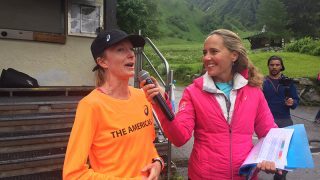
When it comes to running on the road, Olympic medalist Deena Kastor is an expert with U.S. records in the marathon and half marathon and a bronze medal from the 2004 Olympic marathon to prove it. Always on the lookout for new challenges, the speedster decided to add trail running to the mix. Living in Mammoth Lakes, Calif., she has plenty of options, but a recent trip to the Alps opened her eyes to a new world of running opportunities.
“The views are more spectacular than anything I’ve ever seen,” says Kastor who was in Chamonix to run ASICS Beat the Sun, a relay race passing through France, Switzerland and Italy as runners make their way around Mont Blanc. “Running in Chamonix was the first time I experienced really technical trail.
During the journey, and based upon her previous trail running experiences, Kastor has developed a list of survival tips for road runners who want to log more miles on the trail.
Equipment is critical
“At home I like to hit non-technical trails in cushioned road shoes. I learned the hard way that an appropriate tread is critical for navigating water, slippery rocks, snow and mud.”
Be prepared
“This goes for weather and conditions. Bring layers, food, water, gaiters, and poles—basically whatever is appropriate for the conditions and weather. I’m definitely going to start training with a hydration pack so I have water for longer runs, plus the ability to carry the gear I need.”
Get strong
“Road running is a very linear movement. Trail running is more dynamic and requires lateral stability and leg mobility. You need to incorporate exercises to really strengthen hips and quads. And don’t forget your feet and ankles—they need stability and mobility work as well. Think lunges, jumping lunges and balance board work.”
Trust no one
“Okay, not really, but there were quite a few differing viewpoints when to came to time, distances and difficulty levels. I think the most eye-opening thing so far is how adventurous everyone is. Ultra and mountain runners don’t seem to taper, they have a ‘bring it on mentality,’ and a two-hour run on technical trails counts as an ‘easy run!'”
Have fun
“Your splits are going to be higher than for the road. They will depend on the terrain—uphill versus downhill, technical versus smooth, sea level versus altitude, etc. Accept it and enjoy the views.”
The post Deena Kastor’s Tips for Going From Road to Trail appeared first on Competitor.com.
Photos: The Calm Before the Storm of Excitement at the U.S. Olympic Trials
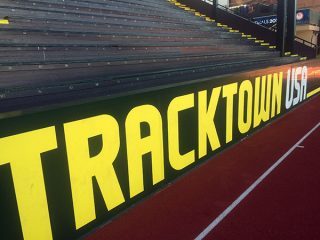
The U.S. Olympic Trials is a huge 10-day track meet that will determine which athletes will make the U.S. Olympic team for the Rio Olympics. It will be held July 1-10 at historic Hayward Field in Eugene, Ore. In this behind-the-scenes photo gallery at what’s been happening the day before the Trials get underway, you’ll see athletes (including world champion decathlete Ashton Eaton) practicing and doing drills, TV crews setting up cameras and microphones, a few iconic images of former Oregon coach and Nike co-founder Bill Bowerman, officials inspecting the track, crews setting up the fan entertainment stage and beer garden, and, of course, Hayward Field in its full green and yellow glory.
RELATED: 2016 U.S. Olympic Trials Track TV Schedule
Photo Gallery
1 of {count}
Back to Start
View Larger Image

Behind the Scenes at the U.S. Olympic Trials
View Larger Image

Behind the Scenes at the U.S. Olympic Trials
View Larger Image

Behind the Scenes at the U.S. Olympic Trials
View Larger Image

Behind the Scenes at the U.S. Olympic Trials
View Larger Image

Behind the Scenes at the U.S. Olympic Trials
View Larger Image

Behind the Scenes at the U.S. Olympic Trials
View Larger Image

Behind the Scenes at the U.S. Olympic Trials
View Larger Image

Behind the Scenes at the U.S. Olympic Trials
View Larger Image

Behind the Scenes at the U.S. Olympic Trials
View Larger Image

Behind the Scenes at the U.S. Olympic Trials
View Larger Image

Behind the Scenes at the U.S. Olympic Trials
View Larger Image
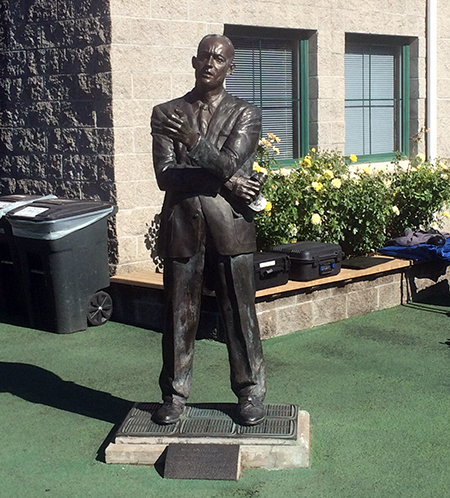
Behind the Scenes at the U.S. Olympic Trials
View Larger Image

Behind the Scenes at the U.S. Olympic Trials
View Larger Image

Behind the Scenes at the U.S. Olympic Trials
View Larger Image

Behind the Scenes at the U.S. Olympic Trials
View Larger Image

Behind the Scenes at the U.S. Olympic Trials
View Larger Image

Behind the Scenes at the U.S. Olympic Trials
View Larger Image

Behind the Scenes at the U.S. Olympic Trials
View Larger Image

Behind the Scenes at the U.S. Olympic Trials
View Larger Image

Behind the Scenes at the U.S. Olympic Trials
View Larger Image

Behind the Scenes at the U.S. Olympic Trials

More Galleries
The post Photos: The Calm Before the Storm of Excitement at the U.S. Olympic Trials appeared first on Competitor.com.
The Most Exciting Finish to a Track Race in U.S. History
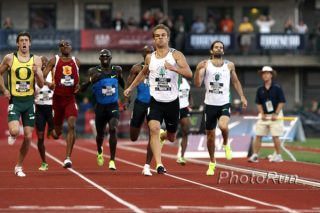
2008 USA Olympic Track and Field Trials
Eugene, OregonÊÊÊ June 27-July 6, 2008
Photo:Andrew McClanahan@Photo Run
Victah1111@aol.com
631-741-1865
www.photorun.NET
With more than 20 running, throwing and jumping disciplines, track and field is an infinitely exciting sport to watch. The only challenge is that interest—and TV exposure—tends to wane in non-Olympic years. To whet your appetite for this year’s U.S. Olympic Trials and the upcoming Olympics, take a look back at epic finish of the men’s 800-meter run at the 2008 U.S. Olympic Trials in Eugene, Ore. Nick Symmonds won the race but the other two Olympic spots came down to an amazing photo finish. If that doesn’t get you fired up to watch more track and field this summer, we’re not sure what will.
RELATED: 2016 U.S. Olympic Trials Track TV Schedule
The post The Most Exciting Finish to a Track Race in U.S. History appeared first on Competitor.com.
Shoe Of The Week: Saucony Xodus ISO

Saucony has overhauled its most rugged trail runner, and our testers loved nearly everything about it. This shoe is considerably lighter and more agile than the Xodus 6.0 that came out last year. (It earned our Best Update award in the trail shoe review in our June 2016 issue, but in many ways this is a complete overhaul and almost a brand new shoe.) It also serves up an enhanced fit, feel and ride. Part of the reason for that is the additional soft and responsive layer of foam called EverRun, which Saucony rolled out in its road shoes earlier this year. It’s also due to a new outsole lug system with a directional wave pattern that offers amazing stability and traction on rocks and steep terrain. Although this shoe is best for rugged trails, the improvements have made it great for mellow terrain too. The ISO-Fit system (which is on many of Saucony’s road shoes) effectively wraps the top of the foot like fingers of a glove. Although proprioceptive feel for the trail is a bit muted in this shoe because of the thick cushioning and outsole lugs, it didn’t stop our testers from raving about its overall fit, feel and ride.
This is the shoe for you if … you’re looking for a good all-around trail running shoe with a softly cushioned ride.
Price: $130
Weights: 10.3 oz. (men’s), 9.2 oz. (women’s)
Heel-to-toe offset: 4mm; 25mm (heel), 21mm (forefoot)
Info: Saucony.com
RELATED: Shoe Of The Week—New Balance Vazee Summit
The post Shoe Of The Week: Saucony Xodus ISO appeared first on Competitor.com.
Ryan Hall's Blog
- Ryan Hall's profile
- 21 followers



